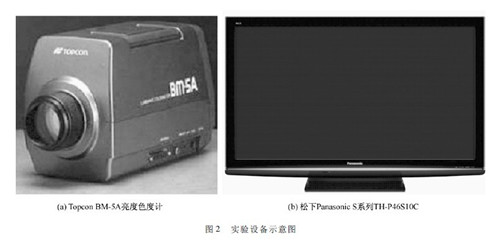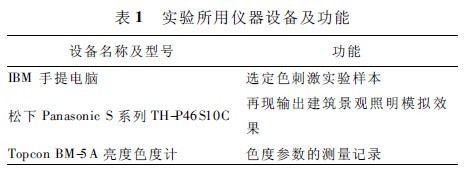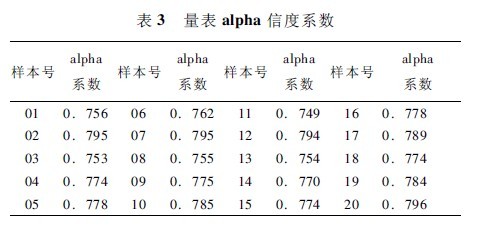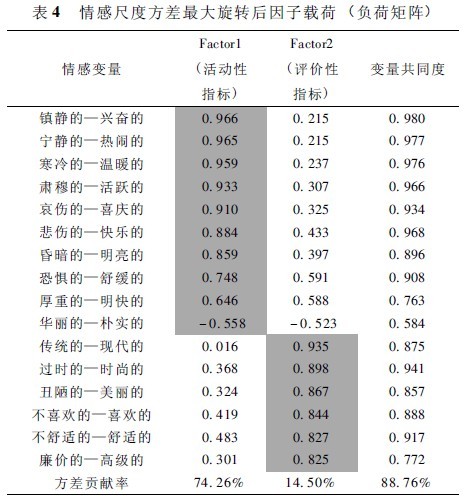Quantitative study of material color light emotion in architectural landscape lighting
1 Introduction
Architectural landscape lighting is the mainstay of the entire urban landscape lighting. At present, the main problem of architectural landscape lighting in China is that the use of colored light is arbitrary and unreasonable. Due to the improper understanding of the relationship between color light and building materials, the combination of the two is unreasonable, resulting in a lighting effect that is contrary to the original intention of the design. The effect is that the architectural landscape lighting lacks scientific, artistic and aesthetic. In order to ideally express the texture of the building facade to attract people's interest, it is necessary to reasonably select a light source suitable for various materials.
This paper studies and analyzes the emotional influence factors of the combination of real light source color and typical building material commonly used in actual architectural landscape lighting, which can provide a quantitative and intuitive description and express large-scale architecture for architectural landscape lighting designers. Method and reference basis for material color sensation and preference.
2 Experimental methods
2. 1 Experimental procedure and experimental equipment
The digital design and evaluation methods used in this study under laboratory conditions are shown in Flowchart 1.

The equipment used in this experiment is shown in Figure 2, as shown in Table 1.

2. 2 Experimental physical stimulation and selection of subjects
The experiment selects five common color light sources (red metal halide lamps) reproduced by the "computer-plasma TV" color light reproducing device.
(RM), purple metal halide lamp (PM), blue metal halide lamp (BM), green metal halide lamp (GM), high pressure sodium lamp (HPS) and 4 typical building materials (clear concrete, stone, exterior tiles, Brick wall surface) Two sets of 20 experimental physical stimuli.

Thirty students from Tianjin University were selected as subjects for visual subjective evaluation, including 14 non-architectural majors, 16 architectural majors, 15 male students and 15 female students. Participants from 12 provinces were divided into 2 groups according to the specific regions of China and ensuring a reasonable allocation of sample sizes:
1) 12 people in East China (Shandong, Jiangsu, Henan, Fujian, Hunan, Jiangxi);
2) 14 people in North China (Beijing, Tianjin, Hebei, Shanxi, Inner Mongolia, Heilongjiang).
2. 3 Selection of emotional scales (scales)
The visual subjective evaluation experimental scale consisted of 21 emotional scales obtained from previous studies (Table 2).

2. 4 Experimental Process Control
This experiment was carried out in the "Multi-function Laboratory for Light Color Measurement and Subjective Evaluation" of the Institute of Building Technology of the School of Architecture of Tianjin University. The experimental area is about 35m2, and the black curtain and black ceiling that can be automatically raised and lowered around it form a closed dark room.
The selected 20 experimental samples were regularly thrown out by the plasma TV in full screen. The subjects sat at about 1.62m from the TV screen and used the selected scale to have five levels of semantics at a viewing angle of about 35°. The difference method describes the physical stimuli presented one by one, and the experimental scene is shown in Figure 3.

3 Analysis and discussion of experimental results
The 13230 visual evaluation experimental data obtained were statistically analyzed by statistical software SAS9.
3. 1 scale reliability analysis
According to the statistical analysis of the experimental data, the alpha coefficient of the scale reliability is shown in Table 3.

It can be seen from Table 3 that the scores of the Creenbacher alpha coefficient of the 20 samples are greater than 0.7, indicating that the overall sample of the experiment has good internal consistency and reliability, the sample selection is meaningful, and the experiment is reliable. .
3. 2 Gender, professional, regional differences impact analysis
A statistical method of two-sided test using Pearson's product difference correlation coefficient r was used to analyze the influence of gender, profession and regional differences on sample sentiment from the overall sentiment evaluation.
Correlation test analysis showed that the overall evaluation of 20 samples in different genders (male and female), different majors (architectural and non-architectural), different regions (North China and East China), correlation at 21 emotional scales The level of significance was reached and showed a high degree of correlation, indicating that gender, professional, and regional differences had no effect on the overall evaluation of emotions.
3. 3 affective factor analysis
After the MAS value test, the emotional scales of "small-clear-clear", "natural-artificial", "inorganic-organic", "simple-complex" four MSA values ​​below 0.5. Scale, the extraction and naming of common factors for the remaining emotional variables (Table 4).

Table 4 shows that the variables of the affective factors have a high degree of commonality, indicating that the emotional variables can be well explained by two common factors (activity, activity, and evaluation). The cumulative contribution rate of variance reached 88.76%. Therefore, the factor extraction result is ideal.
In order to clearly reflect the relationship between emotional variables and affective factors, 20 samples were ranked in descending order according to the average and the mean of the per capita score weights. Positive samples indicate that the sample dominates emotions as positive emotions in the emotional scale, such as “warmâ€, “unpretentiousâ€, “livelyâ€, etc.; in the positive emotion sample, most of them are from high-pressure sodium (yellow) projection, It can be inferred that the effect of light source color on emotion is greater than the influence of material on emotion. Negative values ​​represent the leading emotions that are triggered by negative emotions such as “coldâ€, “gorgeousâ€, “supreme†and so on.
